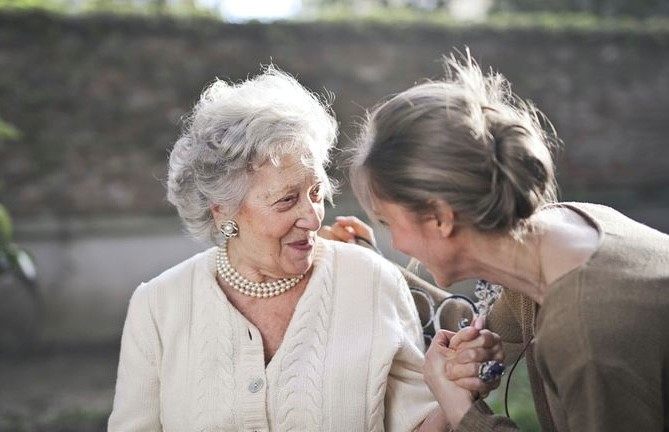By Sydney Clevenger
Everyone can be forgetful at times. But as aging occurs, how does one tell the difference between momentary memory loss and the start of a degenerative brain disease such as dementia or Alzheimer’s? And what can be done to ensure elders who are experiencing dementia and Alzheimer’s maintain their quality of life, with respite for their caregivers?
The signs of dementia can be confusing, says Nancy Heckler, director of Cedar Sinai Park’s Adult Day Services program, one of the Portland area’s premier day services for elders with dementia.
Signs of dementia, says Heckler, include memory problems—particularly in remembering recent events—along with increasing confusion, reduced concentration, personality or behavior changes, apathy and withdrawal or depression, and the loss of ability to conduct everyday tasks.
“The first thing I tell people who notice signs of dementia in their loved one is to have a doctor check them out,” says Heckler. “Often, their medications are wrong, or they need medication, or they have a urinary tract infection, which are very common, and can be easily treated for the elder population.
“Sometimes, a visit to a doctor can make all the difference,” said Heckler.
It is estimated that about 5.8 million people in the United States have Alzheimer’s disease and related dementias, including 5.6 million age 65 and older, and about 200,000 under age 65 with younger onset Alzheimer’s. By 2060, the number of Alzheimer’s disease cases is predicted to rise to an estimated 14 million people with minority populations affected most.
Dasha Kiper’s Travelers to Unimaginable Lands: Stories of Dementia, the Caregiver, and the Human Brain—Heckler’s recommended read for caregivers—says that human brains are programmed for social reasoning, and that if messaging from a loved one doesn’t make sense, we often try to fix the message with reality.
“Instead, the idea in the book is that caregivers should go along with whatever their loved one is saying,” says Heckler, “agreeing calmly, and trying to present solutions, even if what is being proposed makes no sense.”
Heckler gives the example of a program participant who thought she had taken his wife away. To honor his thoughts, Heckler said, “I didn’t take your wife, but let’s go find her.” A call was made to the participant’s wife, and he began to calm down, so Heckler suggested they go outside to wait for her.
“Caregivers should try to go with what their loved one is saying, and if that doesn’t work, take a step back and try different verbiage,” she said. “Caregivers need to stay calm, smile and make eye contact, and be agreeable to what is said, not try to reason with their loved one. Sometimes, silence or moving to a different environment works, too, because there is less stimulation, and what triggered them is no longer there, so the person begins to calm down.
“We get fooled as caregivers with glimpses of good times into thinking, ‘oh, it’s not that bad’,’ says Heckler. “And there are often longstanding familial patterns of communication that have formed between loved ones. Caregivers need to be realistic about what is happening, and make sure they do not make excuses for what is happening, and take time for themselves with breaks from caregiving.”
###



